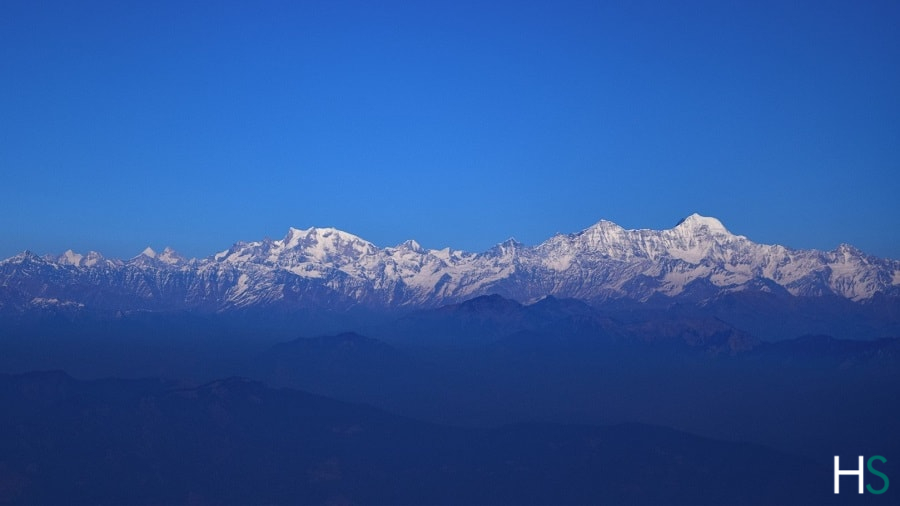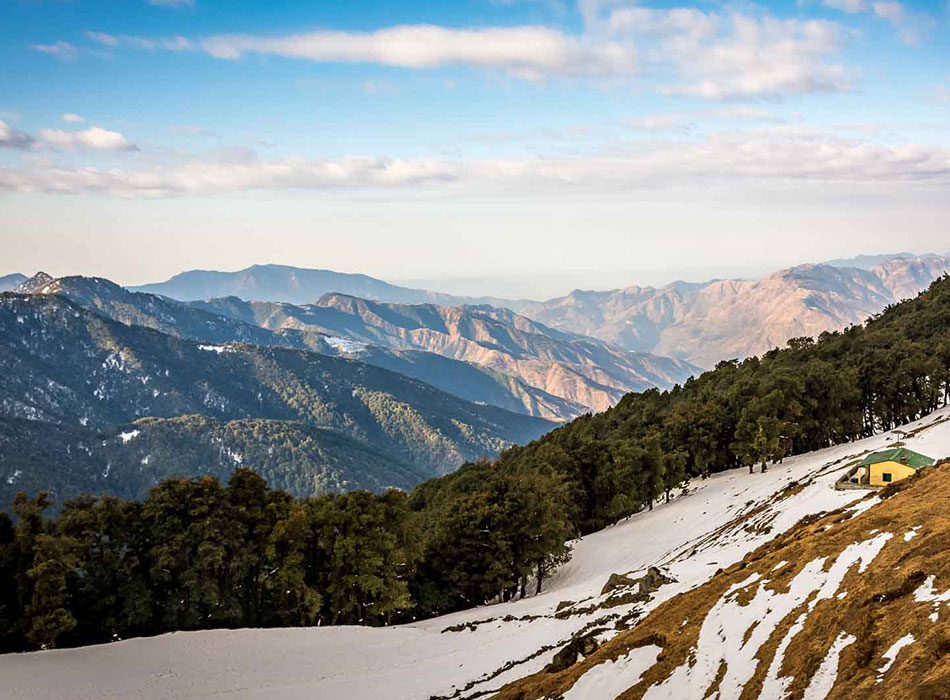nag tibba trek trekking In india

Embrace the spectacular views of Mussorie, Kempty falls, Vikasnagar, and the...Read More
Instruction language: English
All meals included

Get ready for a thrilling weekend escapade to the Himalayan region. The Nag...Read More
Instruction language: English
All meals included
Nag Tibba Trek
People around Delhi should look no further for a fulfilling weekend trek than around Mussoorie! Nestling in the Nag Tibba range of elevation, located close to the ‘queen of the hills’ Mussoorie, the trail to Nag Tibba winds its way through. In the Garhwal Shivaliks, Nag Tibba is a low lying peak of an altitude of 9,915 feet. Relatively unknown and yet deliriously beautiful, this trek is exemplary of the loveliness of the Doon valley. From up high on the peak, with a bird’s eye view of the world spread out down below, you can catch the stunning green forests of the Doon and at a distance the snow peaks of Swargarohini, Bandarpoonch, Kala Nag, Srikant, and the Gangotri group of peaks. Shutterbugs just can’t get enough of the resplendent mountains and the greens of glorious Garhwal from up here, and that making this trek a heart enriching a couple of days journey with a lifetime’s worth of memories to make. From enchanting shepherd's trails to terraced fields of rice to wondrous snow peak vistas, this trek has got a lot of fine romance going on!
What is Nag Tibba Trek?
Literally meaning the “Serpent’s Peak”, standing modestly at 9,915 ft., Nag Tibba has been a remote destination for the worshippers of the Serpent God. The trail falls on the shepherd’s slipstream, by which their livestock are taken to the meadow beyond the woods. All through crossing the trail, you can find people taking their sheep and goats to the grassy escarpment to the far side. While in the winters, the Nag Tibba trek of Uttarakhand assumes a different character. Snow lays thick and heavy as far as vision goes, the rhododendron forests, now bleak, stay rife with silence. The meadowy grazing field of the hills converts into snowfields that you would love to camp in, and right in the middle of vaporous clouds! For winter trekkers looking for a brisk, snowy escape near to Delhi, this is the trek for you just as much as it is a dream getaway in the summers for all of nature’s resplendence.
Why Should You Go for Nag Tibba Trek?
- A refreshing getaway, cutting out of the boring routine and all too close to Delhi for a weekend sojourn.
- Easy challenge level trek for beginners, children, and elderly people.
- Unforgettable view from Nag Tibba summit of Swargarohini, Bandarpoonch, Srikanth, and Black Peak ice ensconced peaks.
- Virgin forest trails through thickets of rhododendrons, deodar, and pines -- a surreal environ to be in the midst of winter.
- Experiencing subzero temperature dipping as low as -7 degrees starting from early December on.
- A taste of the village life in lovely Garhwal hamlets like Devalsari and Pantwari.
- Paying homage at the esoteric temple dedicated to the Nag Devata or the serpent god.
- The chance to combine a few days of repose in the “queen of the hills” Mussoorie with this trek waiting just round the corner.
How High Is the Nag Tibba Trek?
Nag Tibba is perched at a height of 9,915 ft. Starting from a lower stretch of 7,627 ft, the trail spirals to the summit and then descends to 8,530 ft at Nag Tibba base and then further back down from there.
When to Visit?
For summer seekers of the hills Nag Tibba shall be a delight from April to June. You are likely to find lot of rhododendrons blooming in the hills during this time. Fauna such as barking deer too are a common sight in the thickets.
The dreary cold winter in these hills are starkly contrasting with the warm, honeyed summertime. This window begins from October and continues to December, January, and February. From early December on, snow can be found in abundance on these trails.
How to Reach?
By Air: Flying into Dehradun Jolly Grant Airport is the most convenient way to access the trek coming by flight.
By Rail: Dehradun railway station is the most shortly accessible station for making a trek to Nag Tibba. One can also reach Haridwar by train and from there come to Dehradun.
By Road: Dehradun-Mussoorie is accessible by bus from Delhi, as well as from Rishikesh and Haridwar.
Are There Any Shops Available On the Nag Tibba Trek?
Leaving the village Panthwari, the Nag Tibba trail does not have a lot of shops. Trekkers are advised to wrap up shopping for gears, supplies, medicine, etc. by reaching Mussoorie. Panthwari-- the base camp village for this trek houses several places to eat or buy food supplies from, beyond which, stores are sparse.
How Long Does It Take to Complete the Nag Tibba Trek?
The trek goes on for 2 days, starting from village Panthwari and on to a descent into a foothills village and from there a drive back to Dehradun. A long weekend of 4-5 days from Delhi is ideal for making this delightful trek.
What to Pack for the Nag Tibba Trek?
- Large or medium size backpack, and a duffle side bag for extras
- Water bottle
- Sun hat
- Warm cap
- Base layers
- Fleece jacket
- Outer jacket
- Rain jacket (essential for the monsoon months)
- Sturdy trekking shoes and a pair of floaters
- Flashlight
- Trekking pants, several pairs
- UV-protection glasses
- Thermal socks
Is There Any Possibility Of Altitude Sickness?
Altitude Sickness is unlikely to affect trekkers on this path. The green escarpment in the summers feel soothing on the nerves and the altitudes gained happens to remain well within the treeline.
Following the ground rules of acclimatization-- to drink lot of fluids, sleeping low and climbing high, and remaining active rather than sleeping off during the day, shall keep the trekkers fit and feeling crisp.
How Busy is the Nag Tibba Trek?
The Nag Tibba trekking route is usually the busiest from October to March. Since it is close to Delhi, people come here often on a weekend trip to refresh and rejuvenate. July to September the route witnesses very less number of trekkers since it is the monsoon season.
